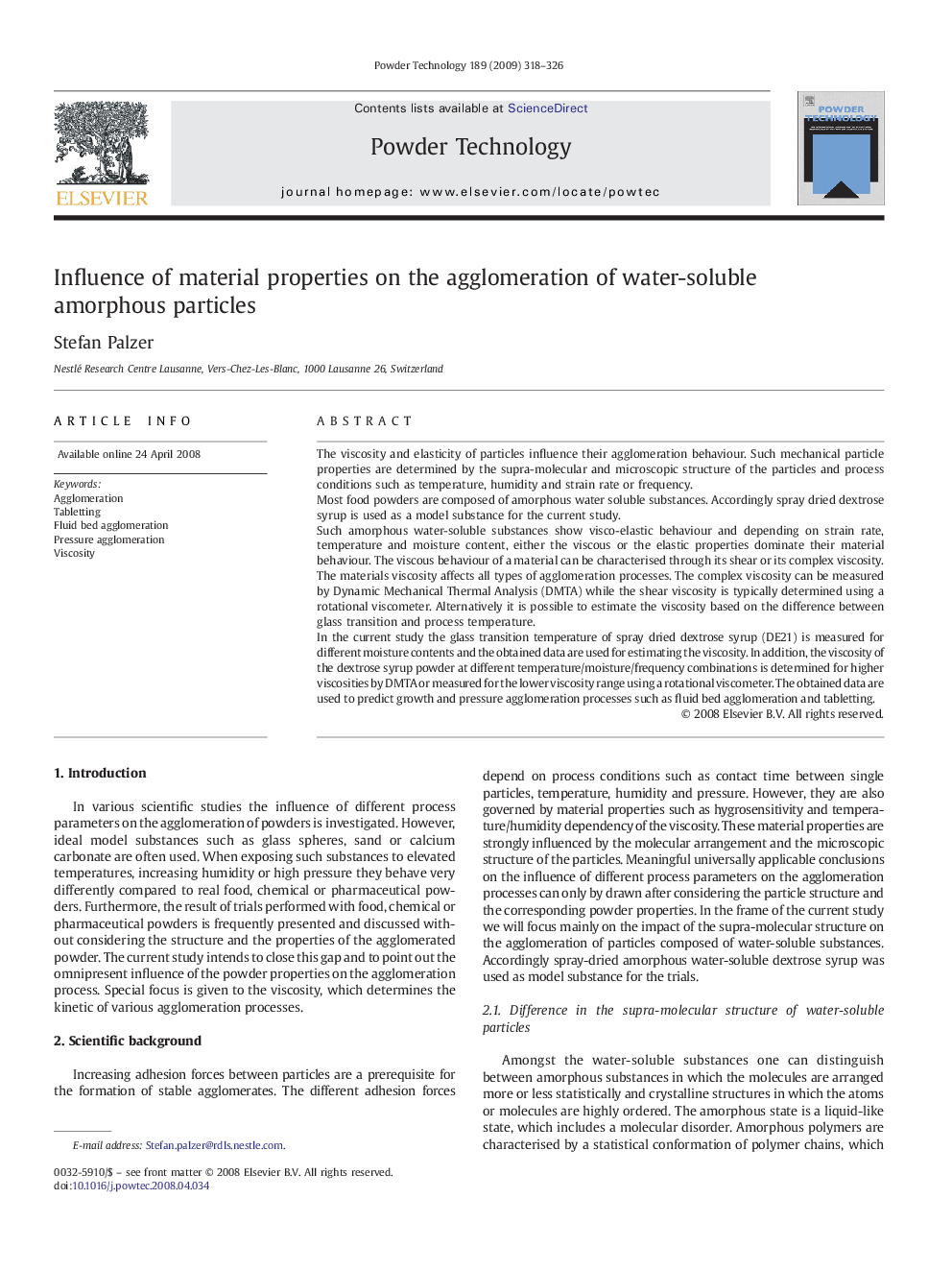| کد مقاله | کد نشریه | سال انتشار | مقاله انگلیسی | نسخه تمام متن |
|---|---|---|---|---|
| 238503 | 465760 | 2009 | 9 صفحه PDF | دانلود رایگان |

The viscosity and elasticity of particles influence their agglomeration behaviour. Such mechanical particle properties are determined by the supra-molecular and microscopic structure of the particles and process conditions such as temperature, humidity and strain rate or frequency.Most food powders are composed of amorphous water soluble substances. Accordingly spray dried dextrose syrup is used as a model substance for the current study.Such amorphous water-soluble substances show visco-elastic behaviour and depending on strain rate, temperature and moisture content, either the viscous or the elastic properties dominate their material behaviour. The viscous behaviour of a material can be characterised through its shear or its complex viscosity. The materials viscosity affects all types of agglomeration processes. The complex viscosity can be measured by Dynamic Mechanical Thermal Analysis (DMTA) while the shear viscosity is typically determined using a rotational viscometer. Alternatively it is possible to estimate the viscosity based on the difference between glass transition and process temperature.In the current study the glass transition temperature of spray dried dextrose syrup (DE21) is measured for different moisture contents and the obtained data are used for estimating the viscosity. In addition, the viscosity of the dextrose syrup powder at different temperature/moisture/frequency combinations is determined for higher viscosities by DMTA or measured for the lower viscosity range using a rotational viscometer. The obtained data are used to predict growth and pressure agglomeration processes such as fluid bed agglomeration and tabletting.
A method using a turbidity sensor has been developed to study rehydration of dairy powders. The process involved dispersing powder in a stirred vessel equipped with a turbidity sensor under standardized conditions. The changes of turbidity occurring during powder rehydration highlighted several stages including particles wetting, then swelling as the water penetrates into the powder bed, followed by a slow dispersion of the particles. The following information was obtained: wetting time (Tw), swelling time (Ts) and rehydration time (Tr). The results are in agreement with static light scattering and optic microscopy analyses. Finally, the method was used for the characterization of two powders (native phosphocaseinate and whey proteins isolate) differing in their rehydration properties.Figure optionsDownload as PowerPoint slide
Journal: Powder Technology - Volume 189, Issue 2, 31 January 2009, Pages 318–326